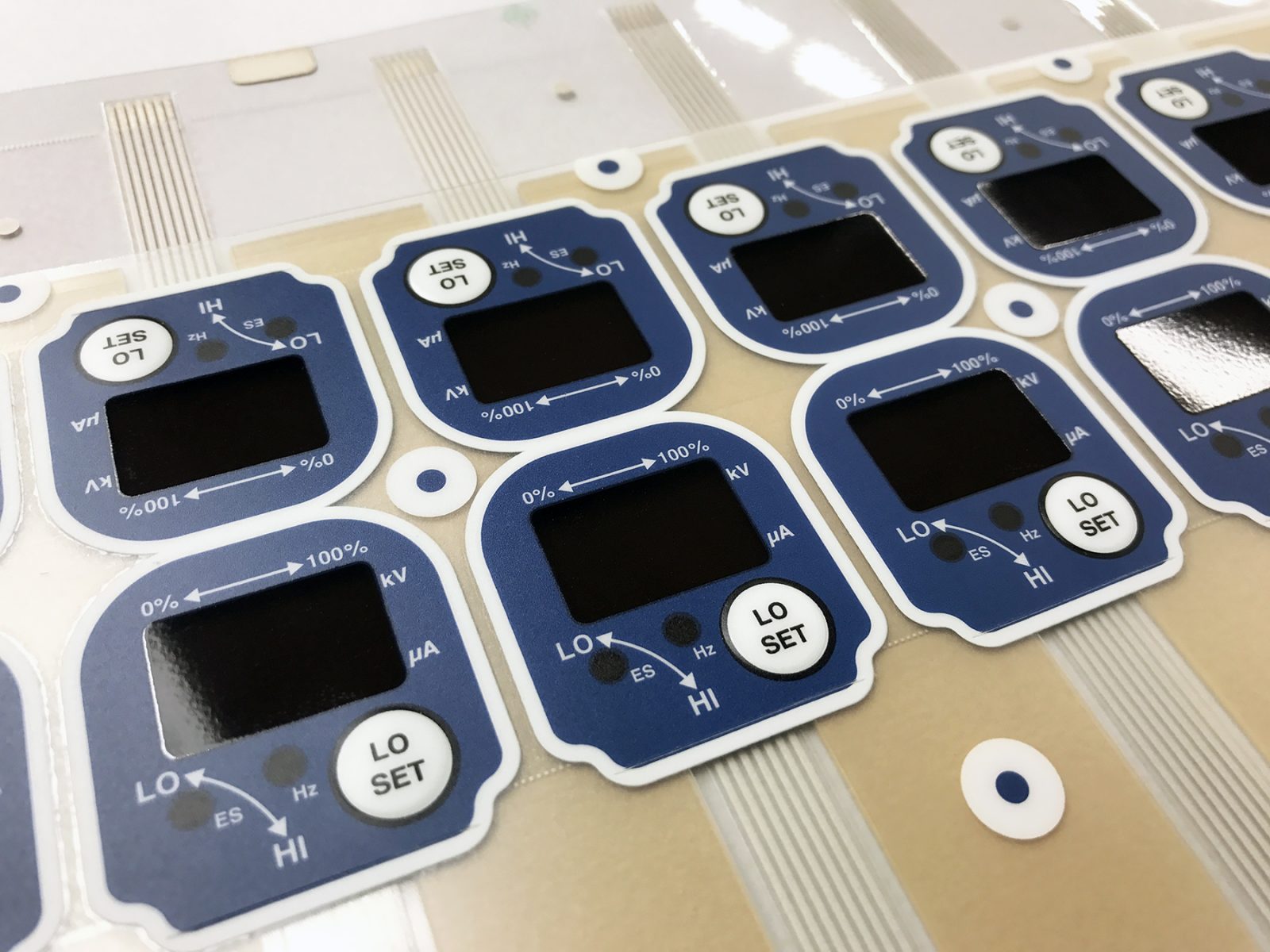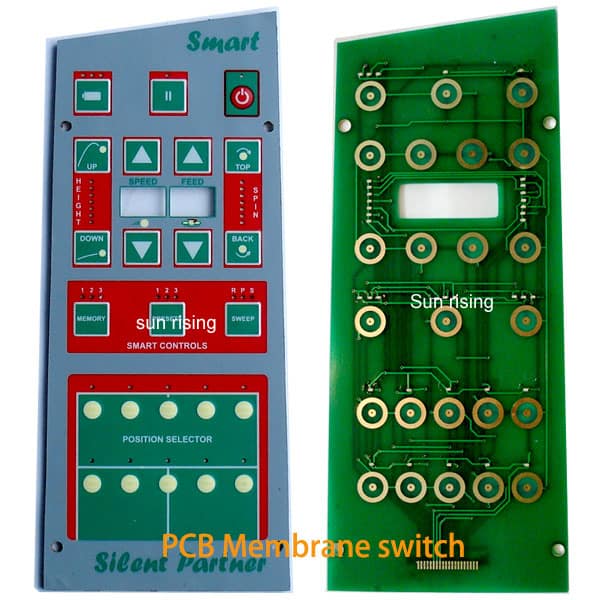Membrane Switch Innovation: The Trick to Dependable and Cost-Effective Interfaces
Membrane switch technology has arised as an essential component in the layout of customer interfaces, giving both dependability and cost-effectiveness throughout a diverse variety of applications. As we explore the diverse advantages of membrane layer buttons, their possibility for technology increases concerns regarding future applications and developing patterns.
Recognizing Membrane Switch Modern Technology
Membrane layer switch technology is a widely used user interface solution in numerous electronic tools, providing a smooth blend of functionality and design. This technology incorporates multiple layers of materials, usually consisting of a graphic overlay, spacer layer, and a circuit layer. The graphic overlay shows the user interface elements, while the spacer layer divides the circuit layer from the overlay until a customer triggers a button.
When stress is put on the overlay, the circuit layer completes the electrical circuit, sending out a signal to the device. This device permits different configurations, consisting of tactile responses and backlighting alternatives, improving user communication. Membrane switches are generally made making use of sturdy materials such as polyester or polycarbonate, guaranteeing longevity and resistance to environmental elements like moisture and dust.
The versatility of membrane layer changes allows their application in varied industries, including clinical devices, consumer electronic devices, and commercial controls. Their small design permits integration right into space-constrained atmospheres, offering an effective individual interface without compromising aesthetic allure. Understanding the ins and outs of membrane button technology is necessary for makers and developers looking for to develop dependable and efficient human-machine user interfaces.
Secret Benefits of Membrane Buttons
While different user interface solutions exist, membrane switches over offer unique benefits that make them a preferred option in numerous applications. Among the key advantages is their resilience; membrane buttons are designed to stand up to rough environmental problems, consisting of wetness, dust, and temperature fluctuations, ensuring durable efficiency. This strength significantly reduces the demand for constant replacements, thereby reducing total maintenance expenses.

Moreover, membrane buttons are light-weight and small, making them suitable for applications where area is limited. Their low-profile layout adds to a smooth appearance without jeopardizing performance.
Cost-effectiveness is additionally a noteworthy benefit, as the production process for membrane changes has a tendency to be less expensive contrasted to standard mechanical buttons. This affordability, combined with their dependability and his explanation ease of installation, settings membrane switches over as a useful remedy for a variety of sectors looking for efficient and effective interface.
Applications Across Numerous Industries
Exactly how do membrane switches adapt to the varied requirements of various sectors? Membrane layer button innovation is significantly acknowledged for its adaptability, making it appropriate for a vast variety of applications across several markets.
In consumer electronics, membrane buttons supply a compact remedy for remote controls and home devices, improving customer experience with intuitive layout. Additionally, the industrial market leverages membrane layer switches for equipment control board, taking advantage of their resistance to rough environments, such as wetness and dirt.
Army and aerospace applications likewise make use of membrane layer buttons for their reliability and ability to hold up against extreme problems, making certain functional efficiency in important situations. Moreover, find out here now the food and beverage market takes on these switches for automated systems, where hygiene and ease of operation are extremely important. Ultimately, membrane layer buttons are customized to meet the unique demands of each market, verifying their vital role in modern-day innovation interfaces
Design and Modification Choices

In the world of membrane switch innovation, design and customization choices play a critical duty in enhancing functionality and individual interaction. These buttons can be tailored to satisfy specific functional requirements and aesthetic choices, making them functional parts in different applications.
One of the primary modification alternatives is the format of the switch itself, which can be created to fit distinct interface and ergonomic factors to consider. By changing the form, dimension, and arrangement of switches, makers can produce intuitive styles that facilitate convenience of use. Furthermore, the incorporation of various colors and graphic overlays enables for branding and boosted presence, making sure that users can rapidly identify features.
Additionally, membrane switches can be engineered with different tactile responses systems, such as raised switches or distinct clicks, to boost the customer experience. Different products can additionally be selected for longevity and environmental resistance, addressing elements such as wetness, temperature level changes, and chemical exposure.
Inevitably, the considerable layout and personalization options readily available in membrane layer button modern technology empower organizations to create tailored options that not only meet useful needs however additionally align with their branding and operational needs.

Future Trends in Membrane Buttons
As membrane layer button modern technology proceeds to advance, future trends are significantly concentrated on boosting individual experience and incorporating advanced functionalities. One substantial trend is the assimilation of touch-sensitive and capacitive technologies right into typical membrane switches. This development enables for even more instinctive interface, offering responsive comments while preserving a smooth layout.
One more arising pattern is making use of eco-friendly materials, driven by the expanding need for lasting production techniques. Suppliers are looking for to decrease their carbon footprint you can try here by making use of recyclable substratums and low-impact inks, lining up with international sustainability objectives.
Furthermore, the increase of the Internet of Points (IoT) is triggering the unification of smart attributes into membrane buttons. Enhanced connection alternatives will enable devices to connect with each various other, permitting for smooth combination right into wider systems.
Furthermore, improvements in printing technologies, such as digital printing, are permitting higher style flexibility and personalization. This allows suppliers to generate detailed styles and vivid shades cost-effectively.
Verdict
In verdict, membrane button technology represents an essential advancement in user interface layout, providing considerable benefits in sturdiness, modification, and cost-effectiveness. As innovations proceed to emerge, especially in touch-sensitive user interfaces and sustainable materials, the possibility for membrane switches to boost user experience and performance stays encouraging.